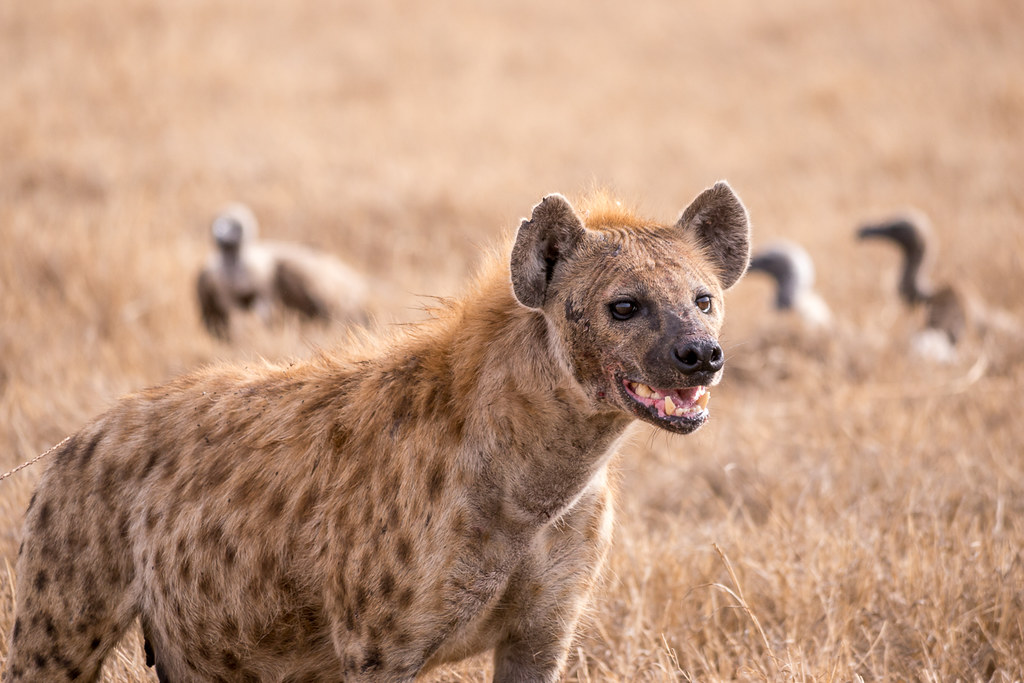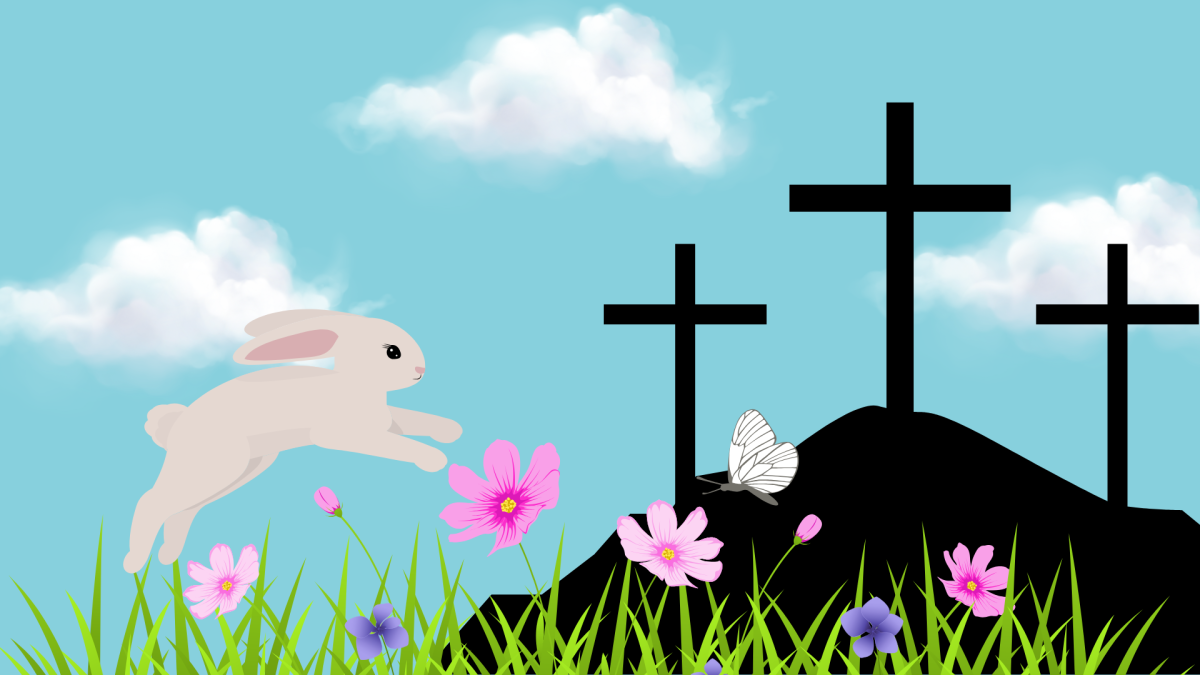You live south of the Sahara, and many of your species spread across Africa. Your coat is short and sandy in color, your weight ranging from 75 to 195 pounds (Denver Zoo Conservation Alliance). The length of your body ranges from four to five feet. You have a large head, complete with round ears and a mane down the back of your neck. If you are a female, you are larger than the other sex.
Today, you are hungry. It is a good thing that you are not picky, since food can be hard to find sometimes. It also helps that you are a very good hunter, and on top of that, your intelligence is something other animals would be jealous of. In the distance, you spot a lump lying on the ground. You correctly identify it to be the remains of a rotting and already eaten animal. It seems like the vultures got to it first, but that doesn’t matter. You quickly take the opportunity to consume the body, satisfied with your luck. Have you guessed what you are yet? You are a spotted hyena, a carnivore closely related to mongooses and meerkats (Denver Zoo Conservation Alliance).
Due to movies like “The Lion King”, hyenas are given a bad rap about their character and way of life. In fact, they are truly remarkable creatures. Not only do they have a strange appearance, with the body resembling a dog, but their biology is especially baffling. It was previously believed and rumored, likely due to African folklore, that the hyena was both male and female, a hermaphrodite (TED Ideas). This misconception likely also formed due to the female spotted hyena’s interesting physical appearance. Essentially, the female hyena has an extended body part that resembles a specific male organ. This physical trait makes it difficult to discern females from males. Furthermore, this makes birth extremely difficult for the female spotted hyena, and according to TED Ideas, “10 percent of first-time hyena mothers die in the process”, and the babies themselves often suffocate on the way out. It’s not all bad for the female spotted hyena. Fortunately, if one is born female, she will receive the privilege of living in a matriarchy in which the females rule over all. More specifically, the power structure works like a ladder; at the top is the dominant female, whose power passes to her cubs.
Then, the males are all the way at the bottom and are reduced to outcasts. More unfortunately for the males, they also eat last, waiting for the females to finish eating. It is not surprising that it is entirely up to the females to decide when they want to mate. The rate of males successfully courting a female can increase based on how much time they spend trying to impress and get the attention of a female (Africa Geographic). It is also worth noting that low-ranking males go for high-ranking females due to the benefits the offspring of high-ranking females receive. Females are also quite picky, which could be due to the fact that they produce few eggs.
If you were born a brown hyena or a striped hyena, you’re more likely to be a scavenger; however, you’re neither of those. You’re a spotted hyena, a fearsome predator with a kill rate of 95 percent (TED Ideas)! TED Ideas elaborates on this, stating that “hunting parties are capable of bringing down aggressive animals, like water buffalo, several times their size. Even lone hyenas have been known to catch impressively large prey”.
It’s another night as a spotted hyena, and you and your pack are hungry. The dark sky provides some relief from the hot sun, and it’s also the perfect time to hunt. What better way to bond with your peers than to go search for food together? Spotted hyenas are incredibly intelligent and social, making them amazing predators. In a scenario where you are with your pack, taking down huge prey is a simple task. You search for any animals around that would be suitable for your next meal. Nothing is around. You persist for a while, until you hear the familiar “whoop” sound from one of your packmates. Then another. Eventually, you can hear the many whoops of your band, even hearing a laugh from one of them. Your ears twitch at the sound, and you start to head towards the source of the sound. Despite your group being small, much noise was heard. As you meet up with your pack, you realize that they must have found something. It’s likely a zebra! It must be your lucky day! A female at the front begins to move, letting out short grunts. She’s signalling and directing the team. This way of communicating with the pack allows the team to be well-coordinated. Spotted hyenas are smart; they know how to identify weaknesses in prey, which increases their success rate (Game Hunting Safaris). Furthermore, the spotted hyena is capable of persistence hunting, a type of hunting where one wears down the prey through methods such as exhaustion. You go silent, following along with your group as you begin to stalk the unsuspecting animal. You finally get a glimpse of the animal. You were right in believing it to be a zebra. It appears to be injured. The zebra is jumpy and quick to flinch at any small sound, able to sense your pack’s presence. It instantly bolts away, but this is not a problem. Spotted hyenas are built for “high endurance chases” and use “speed and stamina to wear down animals over long distances. Spotted hyenas can reach speeds of up to 37 mph and maintain the pace for extended periods,” according to Game Hunting Safaris. The chase begins. You sprint across the grassy lands, your large heart and lungs supporting this level of physical activity, according to the Denver Zoo. The hunt will be easy, as the zebra is already starting to tire. Your pack makes quick work of circling the poor animal, the powerful jaws of your species being able to tear apart the zebra.
Being a predator isn’t always easy, but hyenas are careful to consume every part of the animal, to the best of their ability, of course. This is essentially the life of a hyena. They are fascinating creatures that don’t quite fit into many people’s “favorite animals” list. Despite their perceived odd appearance and behavior, their uniqueness is an essential part of the environment, being both scavengers and hunters. Their willingness to consume the deceased is important for keeping the ecosystem clean of corpses. Maybe the next time you see a hyena in a movie or a show, think about whether or not they’re represented correctly!




















